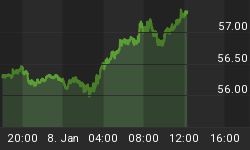The Sterling pound has been the world's top-performing currency so far this year as Brexit developments finally take a backseat to market fundamentals.
The pound touched an 11-month high against the euro in Friday trading, and is hovering around its highest level against the dollar since the Brexit vote.
In the year-to-date, the pound has risen sharply against most major currencies except the Czech koruna, which itself has been on a tear ever since it was unshackled from the euro in 2017.

(Click to enlarge)
Source: Investing.com
Strong Run Likely to Continue
The sterling enters a busy week where good old-fashioned data watching rather than noisy Brexit talk will rules the day.
Between Tuesday and Thursday, numerical navel gazers will be crunching the numbers from a lot of economic data points that will be coming from the U.K. The pound is likely to go through a volatile period as it reacts to an array of key data releases including the labor market report (Tuesday) inflation, CPI data (Wednesday) and retail sales (Friday) as well as a new round of talks surrounding a future UK-EU trade deal. Related: Wall Street Unfazed By Syria Strikes
For investors who are bullish on the pound, there's a solid basis for optimism.
Britain has remained at the bottom of the totem pole of economic growth in the post-Brexit period. In fact, the UK was the only major world economy that recorded slowing growth in 2017. This has taken a toll on the pound which is yet to fully recover from the effects of the Brexit vote.

(Click to enlarge)
Source: Business Insider
But things have finally started looking up.
During the last quarter, average wage growth came close to parity with inflation, a strong signal that the economy is stuttering back to life. Retail sales growth grew 0.8 percent during the last quarter, double the consensus estimate, while unemployment now sits at a 43-year low.
But perhaps more telling is the fact that the GBP/EUR has finally managed to breach the psychological 1.15 resistance. The U.K currency has been facing severe resistance against its regional peer at that level over the past 11 months, only crossing it briefly before beating a hasty retreat.
The currency has, however, managed to stay above 1.15 for a couple of trading days on expectations that the European Central Bank could hold off on its planned QE tapering program.

(Click to enlarge)
Source: TradingEconomics
The GBP should continue to benefit if strong economic data encourages the Bank of England to raise interest rates.
Related: 3 Stocks to Watch This Earnings Season
Meanwhile, the pound has historically performed well against major currencies in the month of April regardless of the political/macro-economic backdrop. Indeed, the GBP-April seasonality is the strongest among G10 currencies. The pound has a long unbroken streak of appreciating against the dollar over the last 14 years running.
Long-Term Trajectory
Long-term bullishness for the GBP is not a straight shoo-in though. A worsening Syria situation could render the UK more fragile and hurt the currency. Further, things could end up going south if the expected “soft Brexit” turns out to be a hard-landing.
Luckily, the long-term fundamentals are looking good, too. The GBP money supply has been dwindling due to increasing bank credit and government policy. Decreasing money supply usually leads to a stronger currency.
By Alex Kimani for Safehaven.com
More Top Reads From Safehaven.com:

















